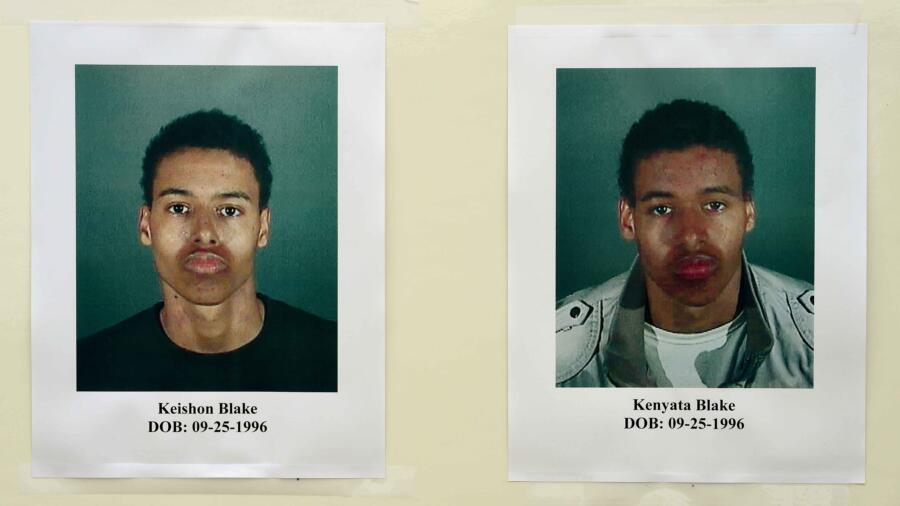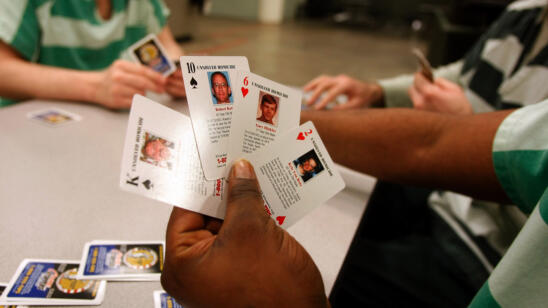In the early morning hours of January 25, 2009, three masked men performed a daring heist in the heart of Berlin. Lowering themselves by rope ladder into a luxury department store, they broke into store cabinets while avoiding motion-triggered alarms, then grabbed approximately $6.8 million in jewelry and watches before fleeing undetected. Fortunately for the police, one of the men left a glove—and DNA—at the scene. That DNA trigged a near-certain match in Germany’s criminal database.
The only problem? It matched two people: Hassan and Abbas O., a set of 27-year-old identical twins.
While authorities were certain one (or even both) of the twins had taken part in the heist, they couldn’t say with certainty which. Unable to pursue the case, the brothers were set free. To this day, the haul remains missing.
The case of the O. twins is more than just an idiosyncratic story about the limitations of DNA evidence. It’s also a portal into the larger question of the relationship between DNA and criminal behavior.
“Based on a large body of research from the past 30 to 40 years, criminal behavior and violence represents the intersection of biological, genetic and environmental factors,” says Jasmine Tehrani, a forensic psychiatrist and professor at the University of Southern California who specializes in the genetic basis of violence and criminality. Identical twins are a fascinating area of inquiry because they’re close to a perfect genetic match, says Tehrani, who also serves on California’s parole board.
A&E True Crime looks at some of the most notorious double-trouble wrongdoers, and explores the roots behind their shared skirmishes with the law.
Robert and Stephen Spahalski
Between him and his identical twin brother, Stephen was the first to kill—he bludgeoned and stabbed bar owner Ronald Ripley 47 times in Elmira Heights, New York in 1971. Only 17 years old, he was charged with manslaughter and spent most of the next 38 years in prison.
His brother Robert killed at least four victims between 1990 and 2005, bludgeoning and strangling his victims to death while high on cocaine. In November 2005, he walked into a police station and confessed his crimes. The remains of his most recent victim—54-year-old Vivian Irizarry—were still in his basement. He was convicted of four counts of second-degree intentional murder, plus an extra count of felony murder while committing a robbery and sentenced to 100 years in prison.
“I thought I was the only murderer in the family,” Stephen said after being informed of his brother’s deeds at Attica Correctional Facility, where he was serving his own sentence.
According to Tehrani, this kind of cascading effect—where one sibling commits a crime after the other—happens when one sibling looks up to the other and has a desire to emulate them.
“It makes sense that we see criminality amongst siblings, in part because they share the same beliefs and same views,” she says, adding that in her own experience working for prisons and correctional facilities, “if they’re closer in age… you’re more likely to imitate their behavior.”
Robert’s drug use, meanwhile, suggests innate genetic imprinting that correlates to violence. “It’s believed with different kinds of illicit substances and drugs, there’s an underlying common thread… a propensity for impulsivity and sensation seeking. There is a heritable component to impulsivity and thrill-seeking behavior, and those traits increase risk of criminality violence.”
Keishon and Kenyata Blake
California twins Keishon and Kenyata Blake allegedly stabbed 62-year-old Maria Rivas to death in South Los Angeles in late December 2014 while she was walking home from a market. Investigators believe the crime was motivated by robbery, and the 18-year-old brothers may have been involved in other unsolved robberies in the area. They were each arrested and each charged with two counts of second-degree robbery and one count of murder.
Tehrani says there’s evidence to suggest linkages between heritability and property crime, noting one study of 14,000 adopted children in Denmark. According to that study, adopted offspring commit higher-than-expected levels of property crime when their biological fathers are criminals, even when the child is raised in a stable, law-abiding environment.
What was interesting about that study, Tehrani says, is that only property crime appeared to be passed along single-handedly—not violent behavior. Later analysis of the study has indicated that having a criminal father and a schizophrenic mother correlates to an increased likelihood of inherited violent tendencies.
But, Tehrani says, “One of the biggest risk factors is growing up in an environment in which violence is modeled or condoned in some way.”
She says as a forensic psychologist, when she’s interviewing a defendant for court, she frequently finds they have a family history of someone who has been in and out of jail. “It’s pretty uncommon that I interview someone who is the black sheep, who is the only one in the immediate family with a criminal history,” she says.
At the time this post was published, neither Blake twin had yet gone to trial.
Jeen “Gina” Young and Sunny Han
Jeen Young and Sunny Han seem like an unlikely pair to end up in court. After immigrating from South Korea at age 12, the pair thrived. They shared valedictorian honors at Mountain Empire High School in Pine Valley, a well-to-do suburb of San Diego.
But both eventually took to crime, and then turned on one another. In 1996, 21-year-old Sunny was jailed for several days on credit-card fraud. When she got out of jail, she discovered that her sister Jeen had taken her BMW. She reported that to police, leading to Jeen’s arrest for auto theft.
Six months later, the situation came to a head when Jeen offered money to teenagers Archie Bryant and John Sayarath to “beat the crap out of my sister; if you can, kill her,” according to court records.
Pretending to be door-to-door magazine salesmen, the assailants forced their way into Sunny’s Irvine, California apartment with a .22-caliber pistol and subdued Sunny and her roommate with nylon rope and duct tape. Police responded to the scene, and then later arrested Jeen at a car-rental office near the San Diego airport. At the time of her arrest, Jeen had more than $4,000 in cash along with Sunny’s driver’s license and credit cards. Earlier that day, she’d gone to a car dealership and attempted to buy a Nissan 300ZX with her twin sister’s identification.
Tehrani says she’s encountered this type of predatory twin behavior multiple times in her work with parolees.
“The usual story line is one twin has a criminal history and the other twin has a criminal history [also], but it’s not as severe as their twin’s,” she says. “…Then [the] one [with the major criminal history] uses the identity of their twin, and so you start to see on [that twin’s] rap sheet crimes they didn’t commit.”
Jeen Han was found guilty of conspiracy to commit murder, burglary and false imprisonment and sentenced to 26 years to life. She was granted on parole in 2017 after serving 19 years.
More Features:
What Is Chris Watts’ Life Like In Prison?
Could New Revelations Lead to a New Trial for Menendez Brothers, Lyle and Erik?


